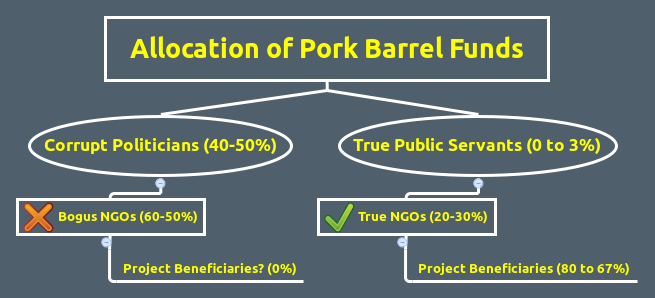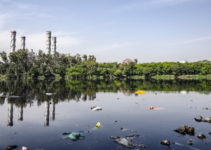What is resource allocation? How is it practiced? What are suggested solutions to ensure fair distribution of wealth? Here’s an analysis of a recent case.
Resource allocation has always been a contentious issue in many countries. That is primarily because the allocation of a country’s wealth depends heavily on politicking, lobbying, or manipulating funds to serve self-interests among those involved.[1,2] This is a controversial process termed as the politics of resource allocation.
The intention of an efficient allocation of resources should have been needs-based, i.e., putting funds where they are greatly needed such as to help uplift chronically poor citizens or address emergencies caused by both anthropogenic or man-made disasters or natural calamities.
The recent issue on a celebrated, well-crafted scam that funneled public funds to questionable non-government organizations in the Philippines highlights inefficiency and inequitability in resource allocation by those involved. For years, the resource allocation framework has allowed bribery to take place, partly because there are loopholes or flaws in its implementation. For this reason, the problem should be addressed as a systemic case, not personality-based, as the issue is being pursued at this time. One person cannot do all those illegal maneuvers without cohorts to make it happen. As the common idiomatic expression says, “It takes two to tango.”
Neeraj Negi, an evaluation officer of the World Bank, explains that funds are allocated based on a resource allocation framework, the creation of which depends on the composition and influence of the members. A lot of lobbying occurs during the process of building the framework, but in the end, the fund provider takes the upper hand. The resulting resource allocation framework may or may not truly respond to the intended purpose.[3]
Existing Resource Allocation Framework
A system governs allocation of scarce resources to constituents. This is referred to as the resource allocation framework. It guides the distribution of a country’s wealth in view of uplifting the living conditions especially of the poor sectors of society who lack opportunities to improve their lot.
Since there are problems arising from the current allocation framework in the Philippines, it should be faulty. Why is the resource allocation framework faulty?
To make clear this issue and to view things systematically, let me represent the current resource allocation framework in the country using the following diagram created using XMind.

This representation of the resource allocation scheme for non-government organizations alone, though simple, reflects the reality as reports, observations, and public knowledge show. The left side represents the informal arrangements made by dishonest politicians while the right side of the framework represent those who stay true to their sworn duties as public officials.
If the funds were used for infrastructure, contractors and suppliers usually give 40 to 50% ‘discounts’ for their services or products either as traditionally practiced or as a result of coercion. The evidences of these undesirable practices are easily seen:
- roads that get narrower than planned or get potholes in less than a year,
- bridges that easily collapse upon the slightest gush of flood waters,
- low quality educational materials,
- inadequate health services,
- politicians or government administrators who become instant multi-millionaires despite a humble background,
- no improvement in the lives of marginalized communities despite funds ‘allocated for their benefit’,
- and many more.
What are suggested solutions to the resource allocation problem?
It took whistleblowers to expose such inappropriate management of funds as their predecessors did in the past. Why do events like these recur? That’s because the allocation system stays the same. The popular solution from well-meaning sectors of society is to scrap the pork barrel funds. But is this the real solution?
It is likely possible that resource allocation will remain laden with corruption even if these funds change hands; such as giving concerned government agencies a hand on fund management once allocated for lawmakers’ discretionary use. The solution appears to be the exercise of transparency in all dealings and an agreed upon resource allocation framework that truly addresses the needs of the people.
As for the corrupt politicians, the citizens must be discerning enough to vote those who are capable of giving rein to their carnal desires and selfish interests. Thanks to a democratic society; there is always hope in sight. Despite its failings, there is always room for improvement.
References
1. Shoham, J. (2001). Taking the politics out of resource allocation: the Kenya experience. Retrieved September 26, 2013, from http://fex.ennonline.net/14/taking
2. Palawaniswamy, N. and N. Krishnan (2008). Local politics, political institutions, and public resource allocation. Retrieved September 26, 2013, from http://www.ifpri.org/publication/local-politics-political-institutions-and-public-resource-allocation
3. Cornell Institute for Public Affairs. (2008). Neeraj Negi: The Politics of Resource Allocation: Lessons from the GEF Experience. Retrieved from http://www.cornell.edu/video/neeraj-negi-the-politics-of-resource-allocation
© 2013 September 27 P. A. Regoniel

